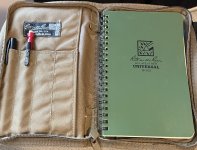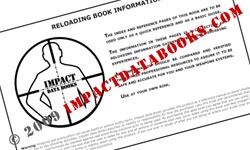Hello all,
I'm trying to work out a range log to help me keep track of results at the range. Currently it is in letter format, but I might try to condense it into a smaller page size. I'm sure I'm going a bit overboard on this but looking back over my notebook, I can see that I am forgetting to mark down key points. If anyone has a better idea or can offer ideas for improvements, it is greatly appreciated.


I'm trying to work out a range log to help me keep track of results at the range. Currently it is in letter format, but I might try to condense it into a smaller page size. I'm sure I'm going a bit overboard on this but looking back over my notebook, I can see that I am forgetting to mark down key points. If anyone has a better idea or can offer ideas for improvements, it is greatly appreciated.







